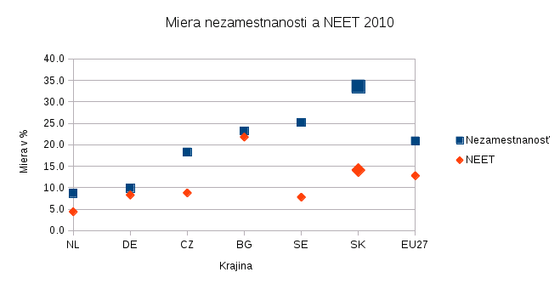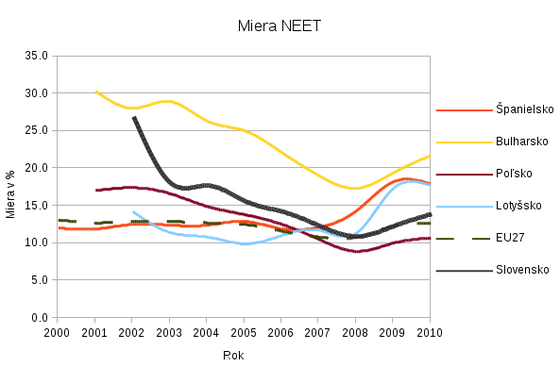- About us»
- Net income calculator»
- Population aging»
-
- Least developed regions»
-
- Average wage
- Material need benefits
- Meal allowance
- Counties of Slovakia
- Inflation
- Living and Subsistence Minimum
- Unemployment of Czechia and Slovakia
- NACE Classification
-
- Life expectancy
- Gender differences
- Youth unemployment and NEET
- Minimum wage in EU
- Unemployment rates of different age groups
- Share of salaries on GDP
- Long term unemployment
- Unemployment rate
- NEET
- Percentage of employees ususally working at nights
- Employment rate
-
- Bratislava and surroundings
- Kopanice
- Danube river
- lower Vah river
- middle Vár river
- upper Nitra river
- lower Nitra river
- Mining cities
- Kysuce a Orava
- upper Vah river - Liptov
- Spiš cities
- upper Hron river
- Juhoslovenská kotlina
- Košice fold and Torysa river
- upper Zemplín
- lower Zemplín
- EU regions
- NUTS3 regions of Slovakia
- LAU1 dataset
-
- Projects and activities
- Inclusive growth»
- Good work
- Project SKRS
- Social system – reality and vision
-
- Education of unemployed
- Young unemployed not taking part in education
- Proposal to change the system of education funding
- Library
- News»
- Contact
Comparison of unemployment and inactivity of young
Unemployment rate in Slovakia in the third quarter of 2011 reached 13.1%, which is 6th highest value in the European Union. The highest-risk groups affected by unemployment are young people aged 15 to 24 years. This age group has a much higher unemployment than other age groups. Youth unemployment rate is at 35.1%. Higher rates are only in Spain and Greece, Slovakia so that occupied the third place. From the perspective of educational achievement the best position have young people with completed secondary education with a rate of 31%, second are tertiary educated people aged 15 to 24 years with a rate of 35.6 % (it should be pointed out that the average college student finishes study aged 24 or 25 years, so it is slightly higher than for graduates of secondary education, who have on average 18-19 years after graduating from high school, the unemployment rate by educational attainment in the age group 25-64 is the lowest in favor of tertiary education) and highest unemployed are young people with elementary education in Slovakia and also the European Union with a rate of 63.5 %. Employment Institute offers several solutions to reduce or eliminate unemployment of graduates.
Traditional indicators of participation in the labor market are criticized for their lack of relevance in terms of young people. The fact is that the basic statistics on unemployment and the unemployment rate does not capture the real situation of young people, because most of them have status of student and thus are classified as not participating in the labor market. Eurostat uses the term NEET (Not in education, employment or training), which was first used in the UK and nowadays it is widely used at EU level, which it uses in its statistics, as one of the most important indicators. This group contains the young people who are not in education system and are unemployed or do not participate in any training for future employment. Compared to unemployment rate, NEET rates show highest risk group of young people who are in the age when they have to develop their potential for employment needs in the future, however unwillingly or willingly got into this situation and the unemployment rate does not reflect the ordinary students of secondary schools and colleges, who are from a statistical point of view inactive. Young people who don't educate themselves and are unemployed are a serious threat. Those who are inactive for a long time have a higher chance to get into the trap of poverty, including very low income, social exclusion, high dependence on state aid and social support, isolation, crime, physical and mental disorders. Also, costs for government are significant associated with NEET young people in Slovakia, which represent € 575 million in 2011, which is 0.9 % of GDP, in Bulgaria it's € 940 million, therefore 2.6 % of GDP. If the labor market was able to recruit only 10 % of NEET, it would save costs in the EU of € 10 billion and employment at 20 % NEET would be able to save up to € 21 billion.
The chart shows comparison of unemployment rate and NEET:

Looking at the chart we see the largest and smallest differences in unemployment rate and NEET in selected EU countries. The country with the lowest unemployment rate, while the lowest NEET, is Netherlands, where youth unemployment is 8.7 % and NEET is at 4.4 %. Even Sweden has a great difference between the rate of unemployment (25.2 %) and NEET (7.8 %). Germany, which has a very low unemployment rate (9.9 %) is only slightly lower rate of NEET (8.3 %). Slovakia, The Czech Republic is compared to Slovakia quite well with the unemployment only 18.3 % and NEET 8.8 %, while here the values are 33.6 % and 14.1 %, and thus in selected countries Slovakia is the worst in terms of unemployment. The smallest difference is in Bulgaria, where youth unemployment stands at 23.2 % and NEET rate up to 21.8 %, which is the highest in the EU27 where the average is 20.9 % unemployed and 12.8 % of young people NEET.
Development of NEET in SR and in selected EU countries:

The time perspective shows the biggest changes in the rate of NEET in Bulgaria. In 2001 the rate was 30.4 %, followed by 2008 dropped to 17.4 % in 2010 its value was 21.8 %. Spain grew especially in the years 2007 to 2010, when the NEET rate was rising from 12.1 % to 18 %. Slovakia's changes were in 2002 from 27.1 % to 11.1 % in 2008 and two years later rate rose to the level of 14.1 %. The curve of Latvia also oscillated, whereas in 2002 the rate of 14.3 %, in 2005 only 10.0 % and in 2010 rose to 17.8 %. Poland had the highest rate of 17.5 % in 2002, the lowest 9.0 % in 2008 and in 2010 stood at 10.8 %. The EU average in 2000 was 13.2 %, the lowest was in 2007 and 2008 at rate 10.9 % .

Education and labour market
Slovakia suffers from weak connections between education and labour market, which results in high unemployment of graduates and young people.. . .

 Share
Share Facebook
Facebook Twitter
Twitter News
News